FIELD MANUAL 126-1: PHYSIOLOGY, CULTURE, AND CUSTOMS OF EXTRATERRESTRIAL SPECIES ABROAD THE STATION
SECTION 1: INTRODUCTION AND GENERAL PROCEDURES
This field manual is for use by members of the United Nations Settlement Program and NATO service personnel who may come into contact with extraterrestrials in the course of their duties. During such encounters, individuals are highly encouraged to communicate through a certified translator or diplomatic official whenever possible.
SECTION 2: THE SEAU
The Seau (Arturk in their native language) are a humanoid species possessing an off-white carapace, standing approximately 6’ 6”-7’. Seau are hermaphrodites, and have no gender. Distinct features include backwards knees, two small mandibles on either side of their humanoid mouth, bright red eyes with slitted pupils, and two sets of arms. The outer arms are shielded by a thick protective plating terminating in hands featuring two long ‘fingers’ and a ‘thumb’, and resemble the claws of a shrimp or lobster. These outer arms have limited dexterity and range of motion, but are capable of significant strength. The inner arms are comparatively much smaller, weaker, and fragile, but are much more dexterous with the inner arms possessing six-fingered humanoid hands.
Seau live in stilt houses 8-12 feet off the ground, with the space below typically used for workshops, storage, or commercial purposes. These are accessed by means of rolling ladders, and have not been observed as having more than two stories.
Seauic sectors tend to be extremely hot, humid, and dim, resembling their original habitat. Humans visiting such sectors should be prepared for twilight-level light; the use of flashlights in such areas for navigation is STRONGLY DISCOURAGED. The use of penlights or backlit screens to examine objects, read maps, etc. is allowed and has shown to cause minimal discomfort to Seau. With that being said, deliberately shining bright light into the eyes of a Seau is likewise STRONGLY DISCOURAGED.
When visiting other sectors, Seau have been known to wear dark goggles similar to sunglasses. Little is known about Seauic culture at this time, although they are known to have a protein-rich diet and have shown to enjoy the taste of crustacean meat, as
well as a strong aversion to garlic. Because of their facial structure, Seauic language is very consonant-heavy, like Polish or Georgian.
For additional notes on the Seauic language, see FIELD MANUAL 126-2.
SECTION 3: THE SEPPIA
The Seppia are a six-legged species with a long, tubelike, two-segment body covered with tough bony plates. Distinct features of the head include a large bony plate which shields four eyes, two of which face forward and two of which face to the side, with oval pupils. Below the eyes are a collection of four extremely dexterous tentacles used for grasping and manipulating objects, which lie above a wide, beak-like mouth. Seppia are approximately 3-4 feet long and stand approximately one foot tall at the shoulder, although a female will be approximately 150% larger than a male of the same age; female Seppia additionally have one ridge on their head plate, while males have two.
Seppia live in circular towers with a distinctive concave roof, similar to the awning of a pagoda. The purpose of this architecture on their home planet was twofold, providing shelter from sun and serving as a solar sill, allowing moisture to collect in a circular shaft; this way, each inhabitant of the structure could have a source of drinking water. The bottom level is reserved for storage; and would used as shelter only in absolute last resort. Elderly Seppia live on the bottom level once they were too weak to access the higher levels, a form of hospice care. On their home planet, burials would be conducted by letting scavengers and predators remove the body naturally; on the station this is no longer a viable option.
Seppia are born from eggs; nest of these eggs are marked by a surrounding ring of jagged, spear-like spikes, and are typically guarded. DO NOT approach a Seppian nest under ANY CIRCUMSTANCES.
Seppia are naturally distrustful of larger creatures, and will frequently attempt to climb nearby structures in order to reach or exceed eye-level. If the Seppia you are attempting to communicate with can or will not do so, or if you are attempting to communicate with a small (<5) group, it is recommended that you kneel or crouch down. If you are addressing a larger group, standing is acceptable. In addition, DO NOT approach a Seppia from behind or attempt to pick one up. Seppian culture considers
physical contact, particularly with their tentacles, an extremely intimate act; act accordingly.
The Seppian language is formed by a collection of trills, clicks, and croaks; for more information, see FIELD MANUAL 126-3.
SECTION 4: THE BASHNYA
The Bashnya (Eetor in their native language) are towering creatures with four stilt-like legs, standing approximately 10-12 feet tall at the shoulder. Each leg is covered with several hundred cilia-like feelers, creating a sense of touch. Attached to their bulb-shaped body are two long, thin arms terminating in three-fingered talons and two eyestalks, each flanking a wide slit-like mouth. Bashnya naturally keep their arms folded up under their bodies, but are capable of moving them with high speed and precision, particularly downwards. Their eye stalks are capable of independent movement, like a chameleon, but prefer to focus both eyes on the same object. In Bashnya, like with seahorses, it is the male who carries young prior to birth. Expecting or recent fathers can be identified by the presence of bright, multicolored plumage on their lower legs. While a Bashnyan’s gender is difficult to determine at a glance, female Bashnya possess an ovipositor on their bodies below the mouth.
Bashnyan sectors are humid, with hilly terrain. The valleys in between are swamps, used for the cultivation and fish farming, with buildings on the hills above. Bashnyan architecture is easily recognizable due to its complete lack of walls, with load-bearing columns where appropriate. Bashnyan buildings are frequently single-story, with particularly large and important structures featuring elevators allowing access to higher levels. If a Bashnyan detachment visits your sector, be aware of their limited mobility will make it extremely difficult, if not impossible, to navigate confined spaces or stairs.
The Bashnyan homeworld is extremely flat, with visibility rarely less than ten miles. For this reason, Bashnyan culture and customs consider visual contact with others to be of extreme importance, with fears of isolation and abandonment common to each individual. For this reason, Bashnyan architecture features no walls of any kind. Similarly, Bashnya visiting human sectors should not be separated, and be accompanied by as many chaperones as practical. Additionally, it should be noted that
the ‘devil horns’ gesture resembles a Bashnyan in a sexual position, and should not be used in their company.
Those familiar with the Bashnyan language have described it as ‘lilting’ or ‘sing-song’; for additional notes, see FIELD MANUAL 126-4.
SECTION 5: THE PIGMEN
Pigmen (Tuz’u in their native language) are bipedal creatures that stand approximately 6’ 6” tall, with very round, almost spherical bodies and short, stubby appendages. Their heads are similarly shaped, with two large forward-facing eyes and an oval, trunklike sensory and sound producing organ, hence their name. Their entire body is covered by a thick layer of fur, similar to a polar bear or seal.
Pigmen sectors, like their home planet, are extremely cold with constant whiteout conditions, and should therefore be toured while wearing protective clothing and goggles. Pigmen will wear specialized goggles and cooling suits during visits to warmer and brighter elements, but visiting areas should be kept as cool as practical in order to maximize visiting time.
Due to the icy conditions of their home planet, Pigmen will naturally clump together to retain body heat and therefore frequently have trouble understanding the concept of personal space and will attempt to minimize exertion whenever possible. Due to the fact that it is impossible to discern the gender of a Pigmen without physical examination (note: do not attempt to physically discern a Pigman’s gender), Pigmen language and culture uses the equivalent of the singular ‘they’ exclusively. Additionally, witnessing a human suffering a nosebleed is extremely disturbing to Pigmen and has been known to cause significant distress; one individual stating, through a translator, “The equivalent would be witnessing another human’s eyes melt into liquid.” Because Pigmen do not use their mouths, but their ‘snouts’ to speak, their language has proven the most difficult for human beings to parse and imitate.
For additional notes on the Pigmen language, see FIELD MANUAL 126-5.


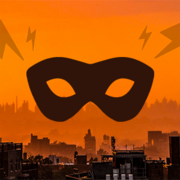

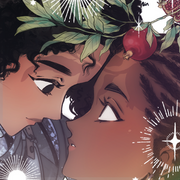
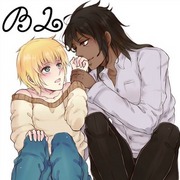

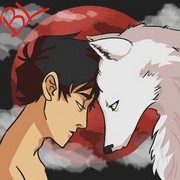

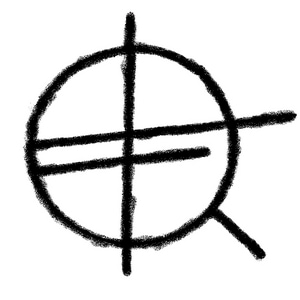
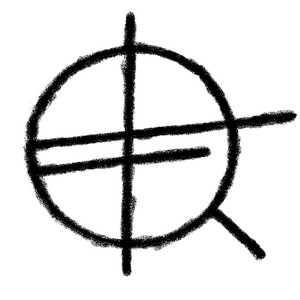
Comments (0)
See all